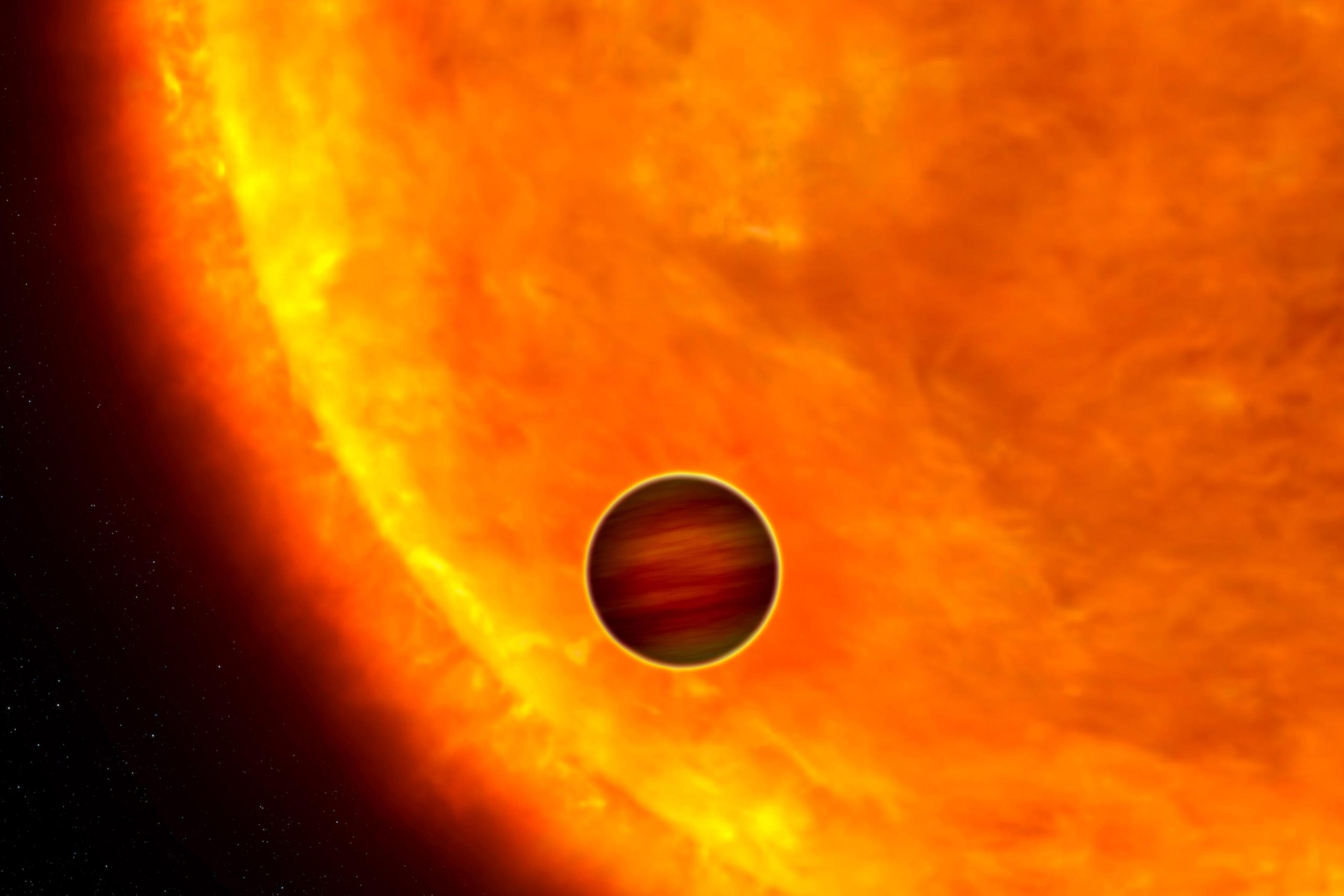
Its average distance from the Sun is 58 million km (36 million miles), and it’s so fast it’s named after Mercury, the wing-footed God.
In a remote solar system about 855 light-years away, there’s a planet that makes Mercury seem like a slow, chilled, distant neighbor of the Sun.This planet orbits its star in only 16 hours, giving it one of the shortest orbits ever measured.
The planet’s name is TOI-2109b, and it’s what astronomers call an “Ultrahot Jupiter.” Hot Jupiters are gas giants that orbit extraordinarily close to their stars and have extremely high surface temperatures.Ultrahot Jupiters are even more extreme.
All those observations confirmed that TOI-2109b is a rare and unusual planet.
(The previous record-holder has an 18-hour orbit.) The planet is about five times more massive than our own Jupiter, and it orbits an F-type star about 1.5 times more massive than our Sun.
It’s difficult to imagine what this arrangement would look like to any observer in the same system.
Artist’s rendering of a Jupiter-sized exoplanet and its host, a star slightly more massive than our sun.The planet is so hot because it’s an average of only 2.4 million km (1.5 million mi) from its star.It’s probably tidally locked to its star like other Hot Jupiters and Ultrahot Jupiters.
A month of TESS observations meant that the team could observe the planet as it orbited its star.If it’s true that molecular hydrogen is torn apart on the dayside and recombines on the nightside, then that could contribute to more efficient temperature mixing in the atmosphere and could mean the temperature isn’t as extreme.
The researchers found that TOI-2109b is slowly spiraling into the star at about 10 to 750 milliseconds per year.Artist’s concept of Jupiter-sized exoplanet that orbits relatively close to its star (aka. a “hot Jupiter”).TOI-210 b’s extreme nature helps confirm the status of Ultrahot and Hot Jupiters as one of the most extreme types of exoplanets?Watching what happens as the planet gets closer and closer to the star is especially interesting to astronomers.
“Ultrahot Jupiters such as TOI-2109b constitute the most extreme subclass of exoplanet,” Wong says.Finding extreme and unusual exoplanets teaches us a lot about the range of planet types out there.Exoplanet surveys find lots of Hot Jupiters and Ultrahot Jupiters because they’re huge and close to their stars.
Astronomers are learning that Ultrahot Jupiters are “… characterized by a number of distinct physical and dynamical properties that set them apart from the rest of the hot gas-giant population.”.But Ultrahot Jupiters like TOI-2109b can teach us a lot about planets at their most extreme and about planet-star interactions that we can’t study in our Solar System.
“While future advances in telescope capabilities will allow for comparably in-depth explorations of smaller and cooler exoplanets, ultrahot Jupiters will continue to be among the most fruitful candidates for impactful efforts at characterization, providing crucial insights into the nature of planets at their most extreme,” the authors write.For more on this discovery, read Newly Discovered Extreme “Ultrahot Jupiter” Blitzes Around Its Star – One Year Is Just 16 Hours Long.November 26, 2021November 26, 2021November 26, 2021November 26, 2021